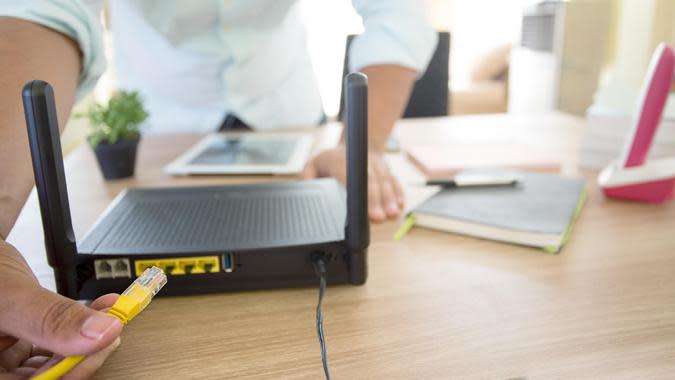5 Ways To Cut Costs on Internet

According to Move.org, the average household can expect to spend $290.79 per month on utility bills -- $59.99 of that will go to internet and Wi-Fi services. The days of a good broadband connection and reliable Wi-Fi as amenities are long gone. Today -- especially in the post-pandemic world -- a reliable connection is a critical part of daily life.
Have Any $200 Quarters Lying Around? It's Worth Checking Your Spare Change
Find Out: 3 Easy Tips To Turn Your Credit Woes Into Wows
From work and school to healthcare and entertainment, Wi-Fi fuels the modern household -- and in America, it's not cheap. In Europe and much of the rest of the world, increased competition and government support have kept internet prices enviably low. That's not the case stateside, where providers operate as near-monopolies. Even here, though, there are steps you can take to lower your internet bills.
The following tips can help most typical households slash the cost of Wi-Fi both immediately and over the long term. Keep reading to learn how to cut the cost of staying connected.

Invest In a Router and Modem
The major internet providers charge between $10 and $15 per month in equipment rental fees. That's $120-$180 a year for a modem and router that you have to give back when you end your service.
You can save money in the long run with an investment in a modem/router combo of your own -- you no longer need one of each. Best Buy is currently selling a Netgear device for $108, which will pay for itself before the first year of your internet contract is up, even on the low end of typical equipment rental fees.
Take Our Poll: Do You Think Student Loan Debt Should Be Forgiven?

Lower Your Speed
In 2019, the Wall Street Journal conducted a study that found that most American households don't use most of the bandwidth they pay for and experience only modest streaming and gaming performance boosts with bandwidth upgrades. Several major studies have confirmed that report in the ensuing years.
Your service provider will use language like "lightning fast" and "blazing speed" to get you to buy a faster (and more expensive) plan. According to Tom's Guide, 50-100 Mbps is enough for three to five devices engaged in online gaming, 4K streaming, as well as the standard web browsing, social networking, emailing and video streaming. If five or more devices are doing all that plus large file sharing and live video streaming, you'll still be fine with just 150-200 Mbps.
BroadbandNow confirms that "internet speeds in the 100-200 Mbps range are ideal for most households." If you're paying for more, try scaling back your plan -- you can always upgrade again if your connection gets sluggish.

Ditch Your Unlimited Mobile Data Plan
If you're one of the millions of Americans who now work remotely at least some of the time, you can cut your Wi-Fi costs indirectly by downgrading your mobile data plan and letting your in-home Wi-Fi do the heavy lifting.
According to How-to Geek, most people use less than 6GB of data per month and simply don't need the expensive unlimited plans that all the major carriers push -- especially for anyone who now works from home. You might consider dropping your major carrier altogether and opting for an alternative provider. Mint Mobile, for example, offers 4GB of data through the T-Mobile network for $15 per month if you pay for a year in advance.

Shop Around and Negotiate Your Service Terms
According to BroadbandNow, "most cable companies will offer you a better monthly price if you call and ask about it." The effort will probably require several calls, quite a bit of patience and lots of politeness. But if what you're asking is reasonable, you're legitimately willing to cancel your service, and if you're at or near the end of your contract, the back-and-forth will probably end with the company lowering your bill in order to keep you as a customer.

See If You Qualify for Government Aid
The Affordable Connectivity Program (ACP) was designed to help low-income families afford the broadband services they need for school, work, healthcare and daily life. The program provides monthly discounts of up to $30 for eligible households -- up to $75 for qualifying households on tribal lands.
You can also get $100 for the purchase of a laptop, desktop or tablet from a participating seller. You qualify for the program if your household is at or below 200% of the poverty line or if you're eligible for programs like SNAP, Medicaid, free or reduced school lunch, SSI, public housing, WIC, Lifeline, or if you've received a Pell grant.
More From GOBankingRates
This article originally appeared on GOBankingRates.com: 5 Ways To Cut Costs on Internet
